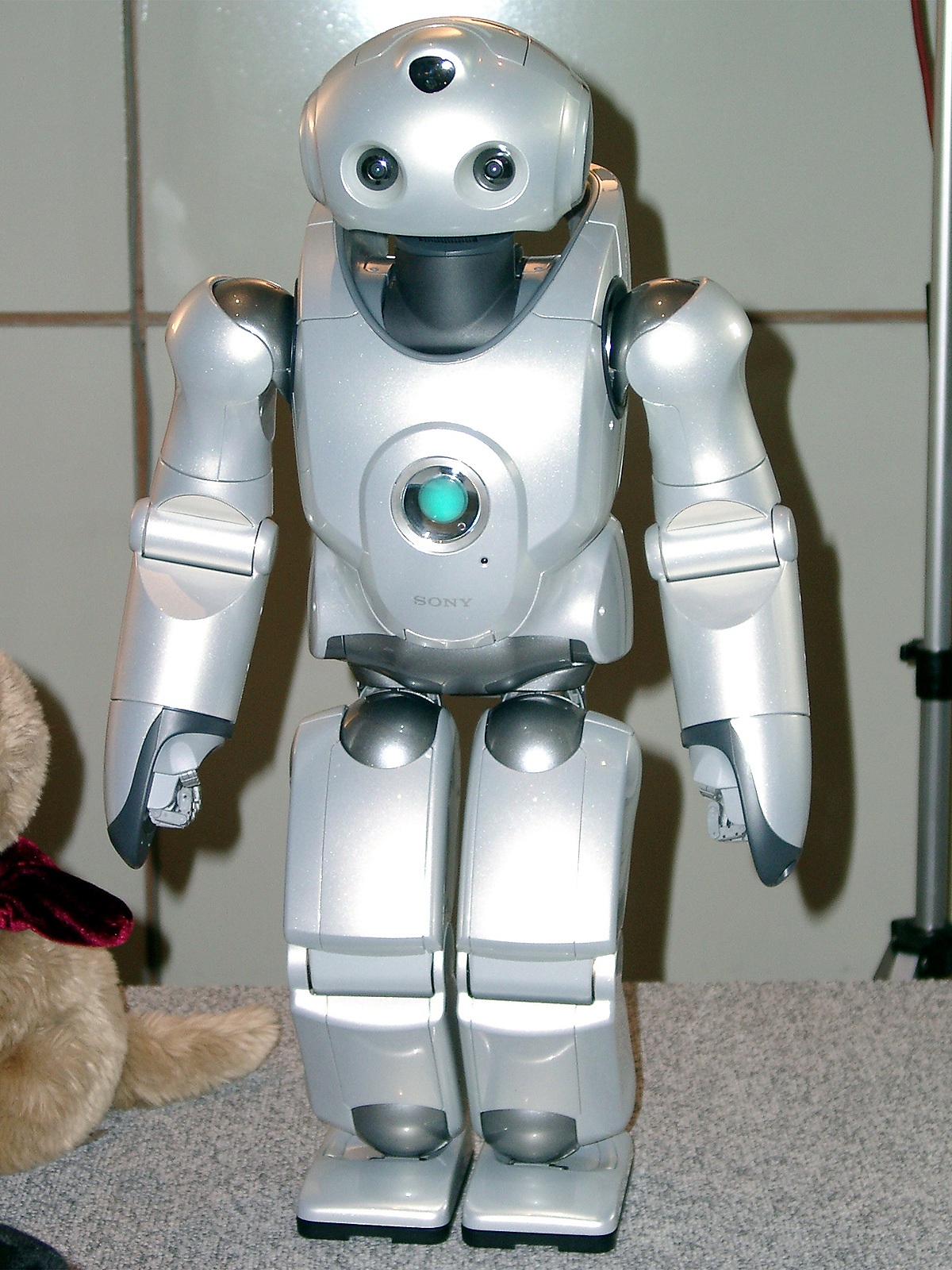
If you are the kind who reads the inside pages of newspapers carefully, you would know that these days stories around robots replacing human jobs are quite common. Most of these stories are written in a way that suggest that doomsday is upon us.
But is it as straightforward as the newspapers and the media makes it out to be? I really don’t agree. I had first written about this issue a few months back in the weekly Letter that I write, but given the importance of the issue, I am sharing my thoughts with the Diary readers as well.
In the recent past, there have been a spate of headlines in the media on the capabilities of robots having reached a stage wherein they can take on human jobs. Here are a few news items, along these lines, which I have come across over the last few months.
1) In May 2016, the shoemaker Adidas announced that it would start manufacturing shoes in its home country of Germany after nearly two decades. But it shall use robots and not human beings to do the same. The company calls its robot factory the speed factory. A second such factory is being planned in the United States as well.[i]
2) In another similar case, Foxconn, a company which manufactures mobile phones for both Samsung and Apple, is replacing 60,000 workers with robots.[ii]
3) In July 2016, HfS Research, a research firm based in the United States, predicted that by 2021, India’s information technology companies will lose around 6.4 lakh jobs to automation. This is something that high ranking officials of Indian IT firms have also said.
4) In mid-September 2016, the textile major Raymond said that it was planning to slash 10,000 jobs across its manufacturing centres all across India and replace them with robots and technology. The company currently employs 30,000 employees.[iii] Hence, robots are likely to replace one-third of its workforce.
5) Driverless cars have already arrived. As Ruchir Sharma writes in The Rise and Fall of Nations—Ten Rules of Change in the Post-Crisis World: “The most common job for American men is driving, and one forecast has driverless smart cars and trucks replacing them all by 2020.”[iv]
6) And if all this wasn’t enough, on October 3, 2016, the World Bank President Jim Yong Kim said in a speech: “Research based on World Bank data has predicted that the proportion of jobs threatened by automation in India is 69 percent, 77 percent in China and as high as 85 percent in Ethiopia.”[v]
These are just a few examples of the expectation that robots will take over human jobs that I have come across over the last few months. As can be seen, this threat looms not just over India but over large parts of the developed as well as the developing world.
As Rutger Bergman writes in Utopia for Realists: “Scholars at Oxford University estimate that no less than 47 per cent of all American jobs and 54 per cent of those in Europe are at the high risk of being usurped by machines. And not in a hundred years or so, but in next twenty years.” He then quotes a New York university professor as saying: “The only real difference between enthusiasts and skeptics is a time frame.”[vi]
Indeed, the threat of robots taking over human jobs is nothing new. So what makes the threat this time around so different from the previous ones? As Yuval Noah Harari writes in Homo Deus—A Brief History of Tomorrow: “This is not an entirely new question. Ever since the Industrial Revolution erupted, people feared that mechanisation [which is what robots are after all about] might cause mass unemployment. This never happened, because as old professions became obsolete, new professions evolved, and there was always something humans could do better than machines. Yet this is not a law of nature and nothing guarantees it will continue to be like that in the future.”[vii]
The question is: What has changed this time around?
Human beings essentially have two kinds of abilities: a) physical ability b) cognitive abilities i.e., the ability to think, understand, reason, analyse, remember, etc. As Harari writes: “As long as machines competed with us merely in physical abilities, you could always find cognitive tasks that humans do better. So machines took over purely manual jobs, while humans focussed on jobs requiring at least some cognitive skills. Yet what will happen once algorithms outperform us in remembering, analysing and recognising patterns?”
Hence, the robots used until now essentially replaced the physical things that human beings did in factories. The trouble is that now the robots have also started thinking (in the form of algorithms) and hence, many more human jobs are on the line. Harari feels that “as algorithms push humans out of the job market, wealth might become concentrated in the hands of the tiny elite that owns the all-powerful algorithms, created unprecedented social inequality.”
This argument along with the evidence offered before seems to be pretty convincing, if seen in isolation. But there is a lot more to this than just the evidence that is currently being offered. As Sharma writes: “While the robotics revolution could come faster than most previous technology revolutions, it is likely to be gradual enough to complement rather than destroy human workforce. A huge gap still exists between the size of the world’s industrial robot population—about 1.6 million—and the global industrial labour force of about 320 million humans. Most of the industrial robots are currently unintelligent machines, committed to a single task like turning a bolt or painting a car door, and indeed half of them work in the car industry.”[viii]
As per the International Federation of Robots, South Korea currently has the highest penetration of robots. The country has 437 robots per 10,000 employees. Japan and Germany come in second and third with 323 robots and 282 robots per 10,000 employees, respectively. China has 14 robots per 10,000 employees.[ix]
The point is that there aren’t as many robots going around as there are made out to be. Also, it is worth remembering here that large parts of the Western world and Japan are currently seeing their population decline. China will also soon reach that stage as well. Hence, in that sense the robots will arrive at the right time replacing the decline in the labour force. As Daniel Kahneman the Noble Prize winning psychologist (he won the Economics prize) told John Markoff, a journalist, who covers science and technology for The New York Times: “You just don’t get it…In China, the robots are going to come just in time.”[x]
The point is that when it comes to big predictions like robots taking over human jobs, there are always a few ifs and buts. The trouble is that these ifs and buts are not being highlighted as much as the core argument of robots taking over human jobs, currently is.
Other than these factors there is a basic law in economics which goes against the entire idea of robots totally destroying human jobs. It’s called the Say’s Law. One of my favourite books in economics is John Kenneth Galbraith’s A History of Economics—The Past as the Present (In fact, anyone who wants to understand economics should mandatorily make Galbraith a part of his readings). In A History of Economics, Galbraith writes about the Say’s Law.
This law was put forward by Jean-Baptise Say, a French businessman, who lived between 1767 and 1832. As Galbraith writes: “Say’s law held that out of the production of goods came an effective aggregate of demand sufficient to purchase the total supply of goods. Put in somewhat more modern terms, from the price of every product sold comes a return in wages, interest, profit or rent sufficient to buy that product. Somebody, somewhere, gets it all. And once it is gotten, there is spending up to the value of what is produced.”
Say’s Law essentially states that the production of goods ensures that the workers and suppliers of these goods are paid enough for them to be able to buy all the other goods that are being produced. A pithier version of this law is, “Supply creates its own demand.”
As Bill Bonner writes in Hormegeddon—How Too Much of a Good Thing Leads to Disaster: “French businessman and economist, Jean-Baptiste Say, discovered that “products are paid for with products,” not merely with money. He meant that you needed to produce things to buy things.”
So what does this mean in the context of robots destroying human jobs? If robots destroy too many human jobs, many people won’t have a regular income. If these people do not have a regular income, how are they going to buy all the products that robots are going to produce? And if they are not going to buy the products that robots are producing, how are these companies driven by robots going to survive?
This is a basic question that none of the analysts, who are predicting doom on the basis of robots taking over human jobs, have bothered to ask. For capitalism to survive, it is essential that human beings work and earn an income, only then can they go around buying everything that is being produced.
The basic problem with the robots taking over human jobs argument is best explained through this example. As Bergman writes: “When Henry Ford’s grandson [Henry Ford II] gave labour union leader Walter Reuther a tour of the company’s new, automated factory, he jokingly asked, “Walter, how are you going to get those robots to pay your union dues?” Without missing a beat, Reuther answered, “Henry, how are you going to get them to buy your cars?””[xi]
Also, another point that most analysts seem to miss is that if and when robots actually do start destroying many human jobs, it is stupid to assume that the governments will sit around doing nothing. There will be huge pressure on them to react and make it difficult for companies to replace human beings with robots.
To cut a long story short, it will be interesting to see how the robots taking over human jobs trend evolves in the years to come, but it will not be as straightforward as it is currently being made out to be. If we are still in business, we will surely keep a lookout!
The column originally appeared in Equitymaster on January 25, 2017
[i] Agence France-Presse, Reboot: Adidas to make shoes in Germany again – but using robots, May 25, 2016
[ii] J.Wakefield, Foxconn replaces ‘60,000 factory workers with robots’, BBC.com, May 25, 2016
[iii] TNN and Agencies, Raymond to replace 10,000 jobs with robots in next 3 years, September 16, 2016
[iv] R.Sharma, The Rise and Fall of Nations—Ten Rules of Change in the Post-Crisis World, Allen Lane, 2016
[v] Speech by World Bank President Jim Yong Kim: The World Bank Group’s Mission: To End Extreme Poverty, October 3, 2016
[vi] R.Bergman, Utopia for Realists—The Case for a Universal Basic Income, Open Borders and a 15-Hour Workweek, The Correspondent, 2016
[vii] Y.N.Harari, Homo Deus—A Brief History of Tomorrow, Harper, 2016
[viii] Sharma 2016
[ix] Ibid
[x] A Conversation With John Markoff. Available at https://www.edge.org/conversation/john_markoff-the-next-wave. Accessed on October 12, 2016
[xi] Bergman 2016



